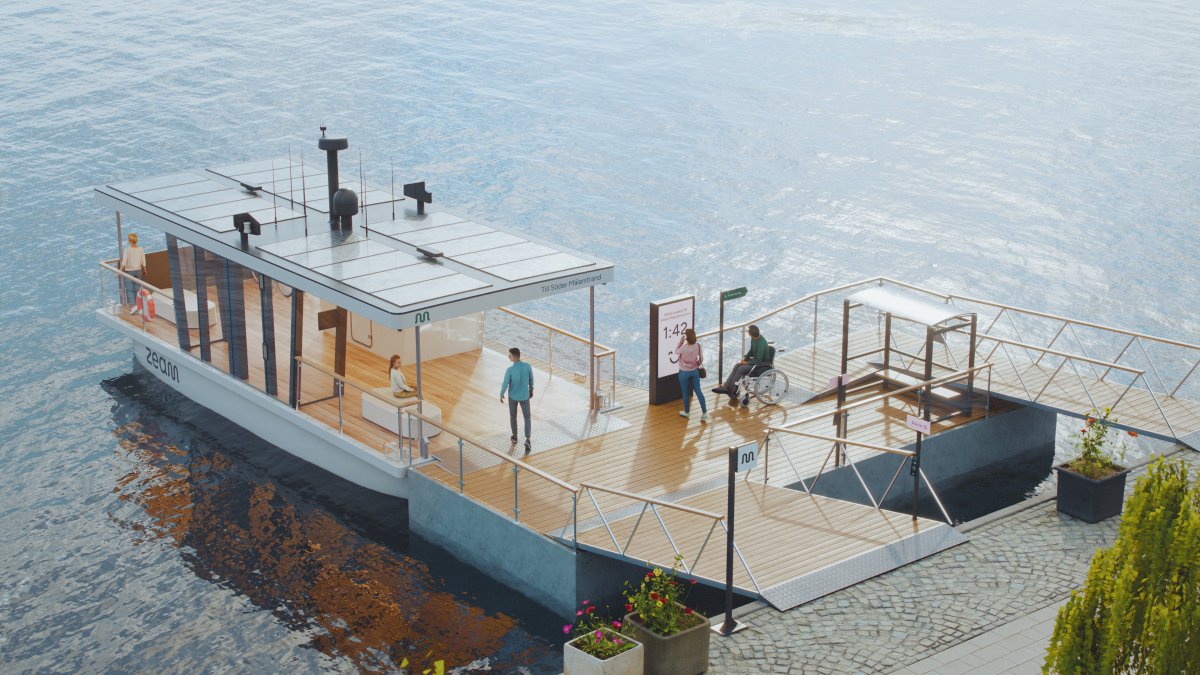The world‘s first self-driving electric ferry has started operation in Stockholm. The MF Estelle will initially operate twice an hour on a 900 meter route between two central islands. The frequency is later to be increased to four departures in each direction.
Advertisement
The twelve meter long catamaran is designed for 24 passengers plus a couple of bicycles. It was developed by the Norwegian start-up Zeabuz and operated by the Swedish ferry company Torghatten under the brand name Zeam. According to a Zeabuz press release, the ferry is a first step towards a “network of virtual bridges” that is intended to enable “affordable and environmentally friendly urban mobility”.
Training of the self-driving ferry with a digital twin
So that the ferry can find its way even when visibility is poor, it is not only equipped with cameras, but also with radar, lidar, infrared and GPS sensors. When docking automatically, ultrasonic sensors at the front and rear serve as a kind of parking aid.
The control software was trained with a digital twin of the ferry. The training data comes from a variety of sources, Zeabuz Marketing Director Ann Iren Holm Rise tells MIT Technology Review: Manually created scenarios; traffic data collected in the real world; parameters varied systematically by “brute force”; Automatically generated settings in which a machine learning algorithm specifically searches for scenarios that pose a particular challenge for the autonomy system.
All components of the digital twin could be set up “with physical modeling and previously collected data, without real-world training data,” says Zeabuz. “When there is training data from the field, the models can be further improved. But the key point is that the digital twin allows us to develop, test and prepare for a new site before we have collected local field data.”
First with a human captain on board
Advertisement
The goal of Zeabuz is to “create the most experienced captain in the world“. But first there is still a human captain on board who is responsible and monitors the system. From 2024, the ship will then be completely autonomous, monitored by a remote operator. The connection between the ferry and the remote operator takes place redundantly via the 5G mobile network and via a radio connection established in shipping called C-Link.
Since the ferry is largely independent thanks to its sensors, the remote operator only needs to give rough guidelines instead of detailed control commands. That is why the requirements for the latency of the radio connection are not particularly high, according to Zeabuz. In this way, an operator should also be able to control several ferries at once. “This enables radically lower operating costs, new business models and mobility sectors,” writes Zeabuz on its website. At the same time, the ferry can also be controlled completely manually by remote control, using a commercially available system from the provider Marine Technologies.
The drive of the catamaran consists of four rotating electric motors, each with an output of ten kilowatts. They are powered by a lithium-ion battery with 188 kilowatt hours. In addition, there are 16 solar panels with a total of six kilowatts on board, which increase the range. With a daily operating time of up to 15 hours, the ferry should be charged once a night, with two shorter charging stops per day, according to Ann Iren Holm Rise.
(hrm)
To home page
